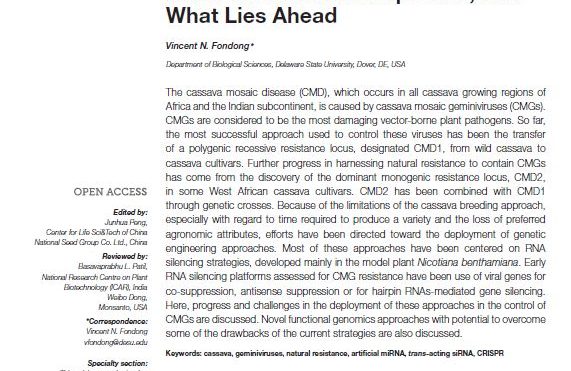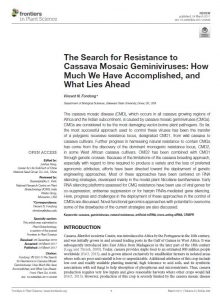Cassava mosaic disease (CMD), which occurs in all cassava-growing regions of Africa and the Indian subcontinent, is caused by cassava mosaic geminiviruses (CMGs). CMGs are considered to be the most damaging vector-borne plant pathogens. So far, the most successful approach used to control these viruses has been the transfer of a polygenic recessive resistance locus, designated CMD1, from wild cassava to cassava cultivars. Further progress in harnessing natural resistance to contain CMGs has come from the discovery of the dominant monogenic resistance locus, CMD2, in some West African cassava cultivars. CMD2 has been combined with CMD1 through genetic crosses. Because of the limitations of the cassava-breeding approach, especially with regard to the time required to produce a variety and the loss of preferred agronomic attributes, efforts have been directed toward the deployment of genetic engineering approaches. Most of these approaches have been centred on RNA-silencing strategies, developed mainly in the model plant Nicotiana benthamiana. Early RNA-silencing platforms assessed for CMG resistance have made use of viral genes for co-suppression, antisense suppression or for hairpin RNAs-mediated gene silencing. Here, progress and challenges in the deployment of these approaches in the control of CMGs are discussed. Novel functional genomics approaches with potential to overcome some of the drawbacks of the current strategies are also discussed.
Region: Africa, India
Date published:
2017
Published by:
Frontiers in Plant Science
Type of resource:
Journal article
Resource topic:
Cassava
Project/Programme: Not specific
Pest/Disease: Cassava mosaic virus
Pages:
19
File type:
External link (6,421 KB)




